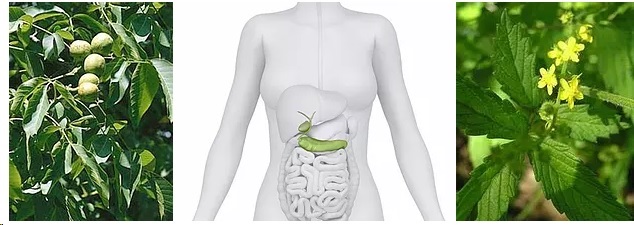Positive Health Online
Your Country

Endobiogenic Medicine – Innovative System of Plant Medicine
listed in herbal medicine, originally published in issue 271 - June 2021
Endobiogenic Medicine – Innovative System of Plant Medicine
by Paul Michael BA BSc MCPP
What is Endobiogenic Medicine?
Endobiogeny is a theory of terrain that assesses how the internal life of the body is generated and sustained.
- Endo - meaning internal
- Bio - meaning life
- Geny - meaning origin
The terms Endobiogeny thus refer to the origins of internal life.
Christian Duraffourd MD conceived the endobiogenic concept, and its teaching was developed by Drs Christian Duraffourd and Jean-Claude Lapraz. Drs Duraffourd and Lapraz decided very early on to use plant medicines as the treatment modality. In their own words;
“the complexity of plant medicines perfectly matches the complexity of the human organism”.
Endobiogenic medicine is a system of medicine that considers the endocrine system to be the true manager of the body. It is the true manager, as it is the only system that manages itself and every other system in the body. The autonomic nervous system helps to regulate the endocrine system. It regulates the intensity and duration of the endocrine function.[1]
The theory of terrain is principal to the endobiogenic concept. When we speak about terrain, we mean the internal environment of the body. The environment of the cells, the tissues and the organs and how these function as a whole.
Courtesy Endobiogenic Medicine Society
Endobiogenic Medicine Seeks to Evaluate the Mechanism behind the Disease Process!
If we look for example at recurrent infection, we can see the theory of terrain at play in the human organism. Have you ever wondered why some people are prone recurrent infections like, chronic cystitis, tonsillitis, sinusitis etc. and others are not?
If we simply use anti-infectious agents, we may not succeed in preventing these infections from recurring or we may have to use anti-infectious agents constantly. On the other hand, if we alter the terrain, the infectious agent, whether it be a bacterial, viral or fungal, will not be able to grow and become pathogenic. By using specific plant medicines, we can alter the terrain in a positive way.
“The germ is nothing. The terrain is everything”. (Louis Pasteur, 1822–1895)
Factors that Modify the Terrain
- Iatrogenic causes, for example: antibiotics profoundly modify the environment of the gut and can have devastating effects on the microbiome.
Antibiotics alter the microbiome causing dysbiosis which effects the nutrient producing capability of the gut. Damage to the terrain of the gut has been linked to all sorts of health problems including immunological and metabolic.[2] The microbiome of infants is especially susceptible to the damaging effects of antibiotics. Research has shown that antibiotics used in the first years of life have highly detrimental and long-lasting effects. There is a link between antibiotics used in early life and the development of disease in later life.[3] - Commerce has approved over 85,000 chemicals.[4] Toxins can have a profound effect on the organism. As well as having direct toxic effects on the cells of the body, some toxins have the ability to have hormone mimicking activity.
Oestrogen mimics are found in herbicides like atrazine, in parabens in many personal hygiene products, bisphenol-a and phthalates in polycarbonate plastics, perfluorinated chemicals in non-stick cookware, nonylphenol in detergents, and triclosan in antibacterial soap.[5] According to a study published in Environmental Health Perspectives, most plastic products release chemicals having oestrogenic activity. Even the BPA free plastics tested still had oestrogenic activity.[6]. There are many other chemicals that can mimic other hormones and research is needed to demonstrate this. - Stress has a profound effect on the terrain as it brings into play the general syndrome of adaptation in its means to regulate the bodies systems. While the organism can manage with acute stress, it does not do so well with chronic stress. The stressors (aggressors) that we are referring to come in many forms. Physical, emotional, spiritual and environmental. Viruses, bacteria and toxins are all aggressors.
It is also very important to consider the time of the person’s life as to what phase they are moving through. Puberty, menopause and andropause are sensitive times when the organism is trying to adapt to a new way of functioning. This can be a critical time for some people in terms of disease expression.
All of these factors must be considered when treating patients.
The Key to the Autonomic Nervous System and its Role in the Disease Process
The autonomic nervous system (ANS) consists of visceral motor nerve fibres that regulate the activity of smooth muscles, cardiac muscles and glands. It controls functions such as, pupil constriction and dilation, heart rate and digestion.[7]
The autonomic nervous system is divided into, sympathetic and parasympathetic. Conventionally, the emphasis is placed on these two divisions of the ANS, where sympathetic is the stress state and parasympathetic is the rest and digest state. Betasympathetic is not necessarily recognized as a separate division or shall we say subdivision of the autonomic nervous system. Betasympathetic is grouped under the general term ‘sympathetic’. Endobiogenic medicine places greater emphasis on distinguishing between the divisions of the ANS and further subdivides sympathetic into alphasympathetic and betasympathetic. Therefore, in endobiogeny we categories the divisions as such:
- Parasympathetic
- Alphasympathetic
- Betasympathetic
It is important to make this distinction as each division has a very important role in maintaining homeostasis and a significant role in the disease process when imbalanced. I have found that many doctors and therapists consider that having a high parasympathetic activity is a good thing, as parasympathetic is linked to a resting and relaxed state. Having an elevated sympathetic state is considered detrimental, as it is linked to stress states and brings with it all of the negative consequences of stress.
This may seem simple enough when viewing the ANS from this perspective but it is a much more complex matter. In reality, there is a much more intricate and dynamic activity at play.
In endobiogenic medicine, it is essential to understand the effects of each of these divisions and subdivisions (para, alpha and beta) thoroughly, as they are intricately linked in the disease process. In response to an aggressor, the ANS adjusts the internal environment of the body, and plays a major role in the modification of the terrain. Fine adjustments are made all the time between para, alpha and beta.
Parasympathetic
The parasympathetic system is an anabolic and nutritive system. It is involved in building and restoring. Some of the main actions of the parasympathetic system:
- Relaxes the sphincters of the stomach and intestines.
- Increases motility of the intestines and the gall bladder.
- Increases all secretions: e.g. mucus, digestive secretions and choleresis.
- Has a hypoglycaemic action. This is because the vagus nerve (one of the main parasympathetic nerves) stimulates the pancreas and thereby increases insulin secretion.
Important to note: insufficiency of the exocrine pancreas will stimulate para, as the organism tries to compensate for the insufficiency by stimulating more secretions. This rise in para is a co-factor in illness and must be recognised and taken into consideration when treating patients.
Sympathetic
Alphasympathetic The alphasympathetic system is linked to and stimulated by excitement and stress. When under stress, the organism releases catabolic hormones hence the alphasympathetic system is a catabolic system, as it mobilises energy that the organism will need to keep functioning.[8] The alphasympathetic system is also a constrictive system. When it is activated, there is vascular constriction at the level of the skin, kidneys, liver and spleen. There is also constriction of the bronchioles, of the muscles of the uterus and bladder and of the sphincters. As alpha is a constrictive system it also plays a role in some forms of constipation as it reduces gut motility. Furthermore, alpha has a hyperglycaemic action; this rise in blood glucose is essential as the brain needs an energetic substrate in order to keep functioning in times of stress.
Patients with high alphasympathetic activity are very sensitive and very reactive people.
Betasympathetic Initially, there is a brief over-activation of the constriction started by the alphasympathetic system, followed by a discharge resulting in the relaxation of:
- The sphincters
- The muscles of the uterus and bladder
- The bronchi
- The blood vessels
Betasympathetic is the release mechanism that resets the cycle.
One of the factors that play a role in illness is the inability of beta to install itself in the normal chronological cycle of the ANS.
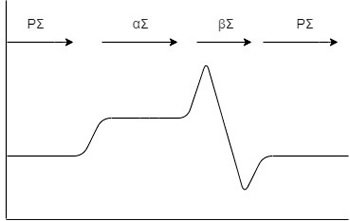
Figure 1 shows the normal cycle of the ANS. Serotonin is the autacoid of para and histamine the autacoid of alpha. Autacoids are chemical substances that act as hormones and cause-specific physiological changes.[9] Note that para comes first in the cycle, followed by alpha and then beta.
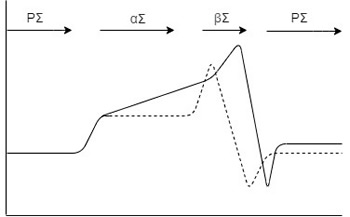
Figure 2 shows the normal cycle of the ANS represented by the broken line. The solid line depicts a scenario, where there is a dysfunction in the normal cycle of the ANS. Para is initially at the same level, but due to a rise in histamine there is an increase in and a prolonged activity of alpha. As there is a rise in alpha, there is an increase in beta activity also. Due to this disturbance, the normal level of para has increased. As described in The Theory of Endobiogeny, Volume 1, page 37. (© 2014 Systems Biology Research Group based on the work of SIMEPI, based on the work of SFEM, based on the concepts of Dr Christian Duraffourd)
From what we have discussed above and from Figures 1 & 2 it is evident that we need to consider the relative activity between all the divisions of the autonomic nervous system and their effect on one another.
Plant Medicines that Act on the Autonomic Nervous System
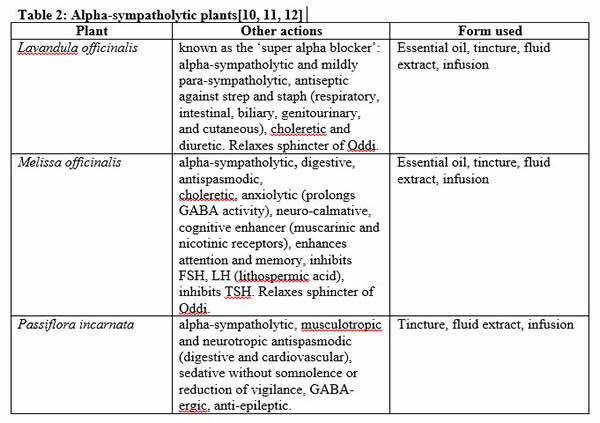
Table 2: Alpha-sympatholytic plants[10, 11, 12]
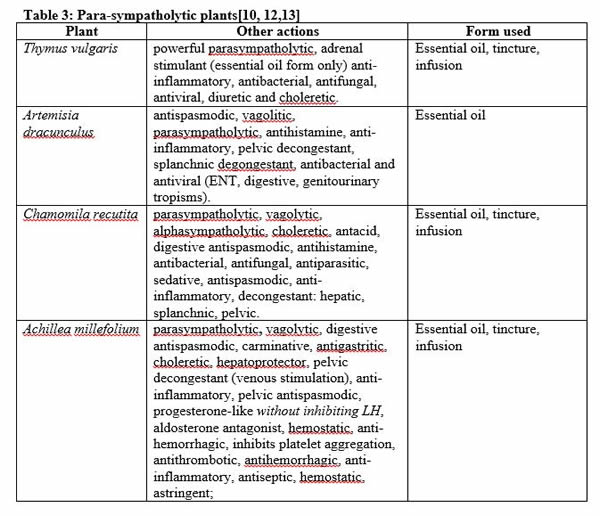
Table 3: Para-sympatholytic plants[10, 12,13]
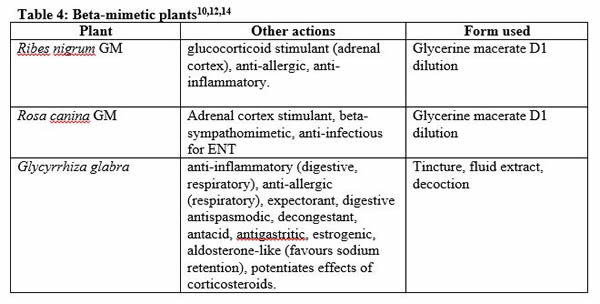
Table 4: Beta-mimetic plants[10,12,14]
Functional Biology
The functional biology, also known as the biology of functions, is a biological modelling program that evaluates the functional capabilities of the neuroendocrine system. It is a unique blood test that does not evaluate serum levels of hormones. It provides the physician with over 150 markers which evaluate the tissular and cellular activity of the hormones as well as their relative activity to one another; a concept that is lacking in classical medicine. Serum levels of hormones reflect neither the degree of stimulation needed nor the metabolic costs incurred in producing a particular hormone.[15] This is why, in many cases, a patient’s blood test results may be normal even though they present with symptoms.
Physical Examination
The endobiogenic physical examination is a vital part of the consultation, as it provides a vast amount of information that cannot be obtained by the case history alone. It provides the practitioner with information on how the autonomic nervous system is functioning and an idea of the endocrine issues at play.
Conclusion
Endobiogenic medicine provides a highly beneficial approach to dealing with modern disease. It brings together traditional plant medicine and modern science, merging them in a way that yields trackable results as seen in the functional biology. I have truly found that endobiogeny, as a system of medicine, has enabled me to gain deeper insight into the mechanisms of the disease process which would have otherwise remained obscure and illusive. This has allowed me to better help my patients.
References
- Notes from seminars given by Dr Jean Claude Lapraz
- Langdon A et al. The effects of antibiotics on the microbiome throughout development and alternative approaches for therapeutic modulation. Genome Med. 8: 39. 2016.
- Gibson M.K, Crofts T.S. and Dantas G. Antibiotics and the developing infant gut microbiota and resistome. Curr Opin Microbiol. 27: 51–56. 2015.
- Gross L. and Birnbaum L.S. Regulating toxic chemicals for public and environmental health Published: PLOS Biology. 16: 1, 2018.
- University of Wisconsin-Eau Claire. https://www.uwec.edu/academics/college-arts-sciences/departments-programs/watershed-institute/explore-opportunities/pollution-tour/pollution-tour-guide/estrogen-estrogen-mimics/
- Yang C.Z. et al. Most Plastic Products Release Estrogenic Chemicals: A Potential Health Problem That Can Be Solved. Environ Health Perspect. 119: 7. 989-996. 2011.
- McCorry L.K. Physiology of the autonomic nervous system. Am J Pharm Educ. 15;71 (4):78. 2007.
- Gardner D. & Shoback D. Greenspan’s Basic & Clinical Endocrinology. Eighth edition. The McGraw-Hill Companies. United States. 2007.
- Journal of autacoids and hormones. https://www.omicsonline.org/autacoids-and-hormones.php .
- Duraffourd C. and Lapraz J.C. Traité de phytothérapie clinique, Masson, Paris, 2002.
- Scaglione F. and Zangara A. Valeriana Officinalis and Melissa Officinalis Extracts Normalize Brain Levels of GABA and Glutamate Altered by Chronic Stress. Journal of sleep disorders and management. 3(1) 2017.
- Mills S. and Bone K. Principles and Practice of Phytotherapy: Modern Herbal Medicine. Churchill Livingstone. London. 2000.
- Srivastava J.K, Shankar E. & Gupta S. Chamomile: A herbal medicine of the past with bright future. Mol Med Report. 3(6): 895–901. 2010.
- Yang R. et al. The anti-inflammatory activity of licorice, a widely used Chinese herb. Pharm Biol. 55(1): 5–18. 2017.
- Lapraz J.C. & Hedayat K.M. Global advances in health and medicine. Endobiogeny: A Global Approach to systems Biology (part 1 of 2). 2(1). 2013.
Bibliography
- Sandra M. et al. Histamine: a new immunomodulatory player in the neuron-glia crosstalk. Front Cell Neurosci. 8: 120. 2014.
- Gatti G. et al. Inhibition by cortisol of human natural killer (NK) cell activity. J Steroid Biochem. 26(1):49–58. 1987
- Pompili M. et al. The hypothalamic-pituitary-adrenal axis and serotonin abnormalities: a selective overview of the implications of suicide prevention. Eur Arch Psychiatry Clin Neurosci. 260(8): 583–600. 2010.
- Lyte M. Probiotics function mechanistically as delivery vehicles for neuroactive compounds: Microbial endocrinology in the design and use of probiotics. Bioessays. 33(8): 574–581. 2011.
Comments:
-
No Article Comments available
